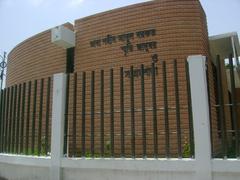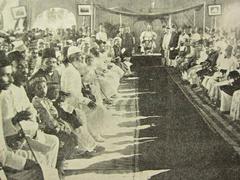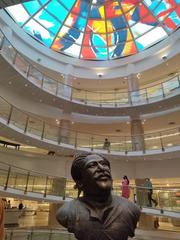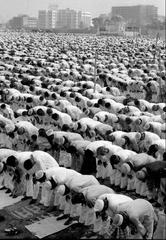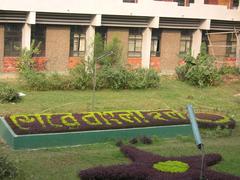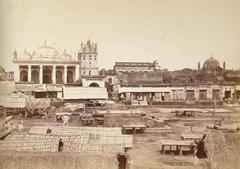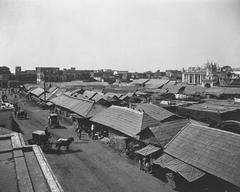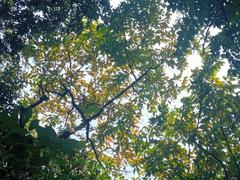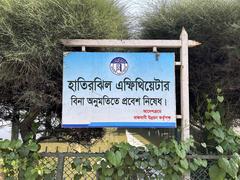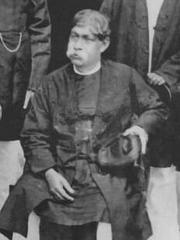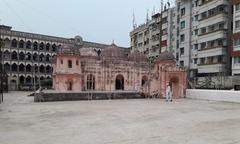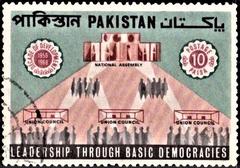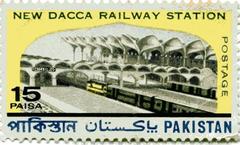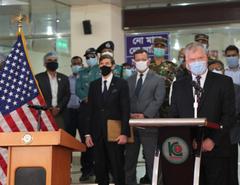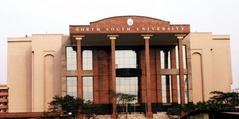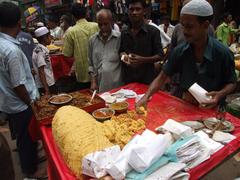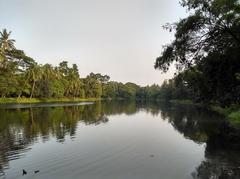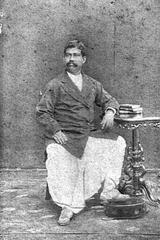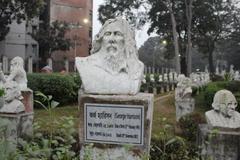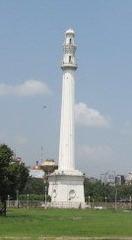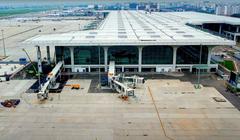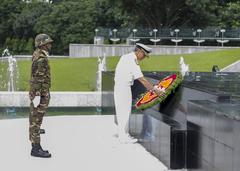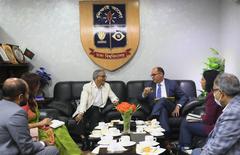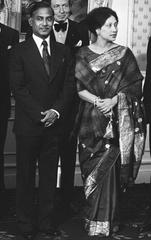
Shahbaz Khan Mosque: Visiting Hours, Tickets, and Dhaka Historical Sites Guide
Date: 04/07/2025
Introduction
Nestled in the heart of Old Dhaka, the Shahbaz Khan Mosque is a magnificent testament to the Mughal era’s architectural and cultural legacy. Built in 1679 CE by Haji Khwaja Shahbaz Khan, a prominent merchant and Sufi prince, this mosque stands as a vital religious, historical, and social landmark. Visitors can experience its distinctive red-brick architecture, vibrant community life, and proximity to some of Dhaka’s most prominent historical sites (Banglapedia).
This comprehensive guide provides everything you need to know about visiting Shahbaz Khan Mosque: from practical details like hours and access, to cultural etiquette, nearby attractions, and travel tips. Whether you’re an architecture enthusiast, a history buff, or seeking an immersive cultural experience, Shahbaz Khan Mosque is an essential stop among Dhaka historical sites (Alonely Traveler; The Daily Star).
Table of Contents
- Introduction
- Historical Background and Cultural Significance
- Architectural Highlights
- The Dargah Sharif (Tomb of Shahbaz Khan)
- Practical Visitor Information
- Guided Tours and Interpretation
- Nearby Attractions and Suggested Itineraries
- Cultural Sensitivities and Local Customs
- Language and Communication
- Frequently Asked Questions (FAQ)
- Conclusion and Recommendations
- References
Historical Background and Cultural Significance
Shahbaz Khan Mosque was constructed during the Mughal period, when Dhaka was a thriving provincial capital under the rule of Prince Muhammad Azam, son of Emperor Aurangzeb. The mosque’s founder, Haji Khwaja Shahbaz Khan, was a celebrated merchant and Sufi figure whose patronage reflects the city’s rich history of trade, Islamic learning, and spiritual life (Banglapedia). For over three centuries, the mosque has served both as a religious center and a symbol of Dhaka’s enduring Mughal heritage (hujaifa.com).
Architectural Highlights
Exterior Features
- Red Brick Facade: Known locally as “Laal Masjid,” the mosque’s distinctive red brick construction is both visually striking and perfectly adapted to Dhaka’s climate (Alonely Traveler).
- Domes and Minarets: Three low domes, decorated with lotus and kalasa finials, crown the prayer hall. Four octagonal minarets with baroque details rise from the corners, reflecting the blend of Mughal and Bengali styles (The Daily Star).
- Entrances: The eastern facade features three arched entrances, with the central one larger, in keeping with Mughal architectural symmetry.
Interior Elements
- Prayer Hall: The elongated hall beneath the domes is modestly lit, creating a contemplative space for worship.
- Mihrab and Minbar: The mihrab (prayer niche) and minbar (pulpit) are crafted from black stone, providing a striking contrast to the red walls.
- Ornamentation: The mosque features subtle Mughal floral and geometric motifs, primarily around the arches and domes (EAA).
The Dargah Sharif (Tomb of Shahbaz Khan)
Adjacent to the mosque lies the Dargah Sharif, the tomb of the founder. Its single dome and windowless walls echo the mosque’s architectural style, while the southern verandah with a curvilinear roof provides shelter. The grave is customarily covered in red cloth, symbolizing reverence (Alonely Traveler).
Practical Visitor Information
Location and Accessibility
- Address: 1, Shahbaz Khan Road, near Chawk Bazar, Old Dhaka (Google Maps)
- Getting There: Easily reached by rickshaw, CNG auto-rickshaw, or taxi. The area is best explored on foot due to narrow, busy streets. Parking is extremely limited; use public transport for convenience (Dhaka Tribune).
Visiting Hours and Entry Policy
- Hours: Open daily from dawn (around 4:00 AM) until after Isha prayer (about 9:00 PM).
- Entry Fee: No tickets or entry fee required; donations for maintenance are appreciated.
- Visitor Guidelines: Non-Muslims are welcome outside of prayer times. Avoid visiting during Friday Jumu’ah prayers (12:30–2:00 PM) due to high attendance.
Dress Code and Etiquette
- Required Attire: Men should wear long trousers and sleeved shirts; women should cover head, arms, and legs (scarves recommended).
- Shoes: Remove footwear before entering the prayer hall; racks are provided.
- Behavior: Maintain silence and respect, especially during prayer. Photography is generally allowed outdoors, but always seek permission before photographing people or inside the prayer hall.
Facilities and Amenities
- Ablution Facilities: Separate but basic wudu (ablution) areas for men and women.
- Restrooms: No dedicated tourist restrooms; use nearby restaurant or hotel facilities.
- Drinking Water: Available, but bottled water is recommended for visitors.
- Shops and Food: No on-site shops, but Chawk Bazar offers renowned street food and sweets, especially during Ramadan (The Daily Star).
Accessibility for People with Disabilities
Due to its 17th-century structure, the mosque has several steps and uneven flooring, making access challenging for wheelchair users and those with mobility difficulties.
Safety and Security
The area is crowded and lively, especially during festivals. Mind your belongings and avoid bringing valuables. The mosque is well-supervised during opening hours.
Best Times to Visit
- Timing: Early morning or late afternoon for ideal lighting and thinner crowds.
- Season: November to February offers comfortable temperatures and lower humidity.
- Festivals: Ramadan and Eid witness vibrant local traditions, though the mosque is busiest during these periods (Dhaka Tribune).
Guided Tours and Interpretation
Official guided tours are not offered by the mosque administration, but knowledgeable local guides can be hired nearby (typical fee: BDT 300–500/hour). These guides provide valuable historical and architectural insights and can conduct tours in English if arranged in advance (Banglapedia).
Nearby Attractions and Suggested Itineraries
Shahbaz Khan Mosque is ideally situated for exploring Old Dhaka’s rich heritage. Consider combining your visit with:
- Lalbagh Fort: 17th-century Mughal fort and garden complex (Bangladesh Tourism Board)
- Chawk Mosque: Another Mughal-era mosque with intricate tilework (Banglapedia)
- Armenian Church: A rare 18th-century church reflecting Dhaka’s multicultural history (Atlas Obscura)
- Curzon Hall: Iconic Indo-Saracenic building at Dhaka University
- Old High Court Area: Colonial-era architecture and legal history
A half-day walking tour beginning at Shahbaz Khan Mosque and visiting these landmarks offers a thorough immersion in Dhaka’s architectural and cultural tapestry.
Cultural Sensitivities and Local Customs
- Greet locals with “As-salamu alaykum.”
- Avoid loud conversation, public displays of affection, and disruptive behavior.
- Non-Muslims should not enter the prayer hall during prayer times.
- During religious festivals, expect larger crowds and increased observance.
Language and Communication
Bengali is the main language spoken. Some local guides and younger residents speak English, but not universally. Learning basic Bengali phrases or using a translation app will enhance your experience.
Frequently Asked Questions (FAQ)
Q: Do I need a ticket to visit Shahbaz Khan Mosque?
A: No, entry is free; donations are appreciated.
Q: What are the visiting hours?
A: Open daily from around 4:00 AM to 9:00 PM, with access for non-Muslims outside of main prayer times.
Q: Is the mosque wheelchair accessible?
A: Due to steps and uneven floors, accessibility is limited.
Q: Can I take photographs?
A: Allowed in the courtyard and exterior; always ask before photographing people or prayer activities. Tripods and drones are not permitted.
Q: Are guided tours available?
A: Not officially, but local guides can be hired in the area.
Conclusion and Recommendations
Shahbaz Khan Mosque is not only an architectural gem but also a living center of worship and community in Old Dhaka. Its red-brick domes, Mughal artistry, and spiritual atmosphere offer a unique window into Bangladesh’s rich heritage. With free admission, central location, and proximity to other historic sites, your visit can be both enriching and convenient.
For the best experience:
- Visit in the cooler months (Nov–Feb), during morning or late afternoon hours.
- Dress modestly and respect prayer times.
- Consider hiring a local guide for deeper insight.
- Explore nearby attractions for a full day of cultural discovery.
Download the Audiala app for detailed maps and audio tours, and follow us on social media for the latest updates about Dhaka historical sites.
References
- Khwaja Shahbaz’s Mosque and Tomb (Banglapedia)
- Shahbaz Khan Mosque in Dhaka: History, Visitor Information & Cultural Significance (hujaifa.com)
- Shahbaz Khan Mosque: A Majestic Dhaka Historical Site with Visiting Hours, Tickets, and Travel Tips (Alonely Traveler)
- Shahbaz Khan’s Legacy (The Daily Star)
- Must Visit Mosques in Dhaka (halaltrip.com)
- Old Dhaka’s Mosques (Dhaka Tribune)
- Shahbaz Khan Mosque Visitor Guide (Banglapedia)
- Chawk Mosque (Banglapedia)
- Armenian Church (Atlas Obscura)
- Lalbagh Fort (Bangladesh Tourism Board)
- Chawk Bazar’s Iftar Bazaar (The Daily Star)

